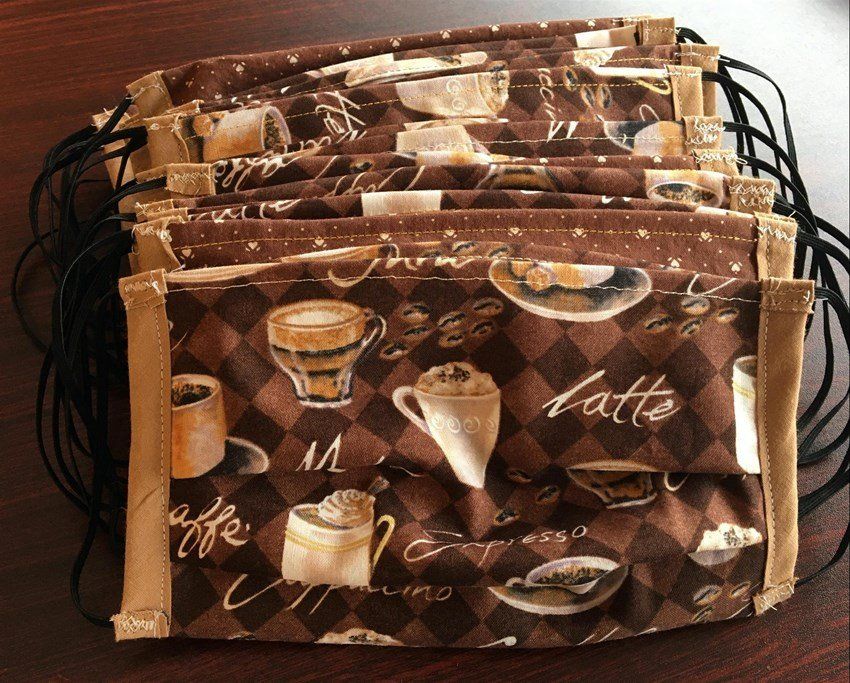Making Protective Masks
The request for home-sewn masks is urgent and nearly everywhere.
The specifics of what type of masks hospitals or nursing homes want can vary. Therefore, it is not prudent for HarvestCall to provide specific information about masks or organize distribution of masks. Please check with your local medical facilities for their specific instructions and specifications.
However, based on various questions and requests, HarvestCall offers the following basic information and instructions:
- washing instructions with a disclaimer to print and distribute with the masks (“Washing Instructions and Disclaimer”) an encouragement card with a few verses to print and distribute with the masks (Encouragement Card)
- the following general steps and resources
Step One: PRAY that God would guide and bless these efforts. Needs and the best way to meet those needs are changing quickly and it’s difficult to provide appropriate information. However, spiritual needs are still the same and it is prudent for us to intercede on behalf of others.
Step Two: READ the following advice from HarvestCall’s Medical Committee
Disclaimer: A home-sewn mask is not intended to provide the same protection as “real masks.” If the real masks are available and required for a circumstance or recommendation by officials, then without question, the real masks should be used instead. In the event that real masks aren’t available and the use of masks are recommended by officials (for an individual or a population), then a home-sewn mask is better than nothing and will certainly have some benefit by stopping droplets
Special Request: We are sewing out of love to help others. We do not want to contribute to the fear/panic/shortage cycle. We do not intend to communicate (verbally or otherwise) that you need to wear a mask. In order to reduce anxiety and tension about a shortage, we do not suggest people wear masks unless it is recommended and there is a supply of them.
Washing instructions for home-sewn masks: Wash daily in a disinfectant such as a bleach product to prevent it being a surface that would allow for transmission of the virus. If the mask has a disposable filter, replace it using a nonwoven fabric (such an unscented dryer sheet or a dried hand wipe).
Step Three: Distribution destination needs to be decided, as that will affect what you make. Everything changes almost daily, but here’s a few general ideas:
- Check with your congregation’s sewing group, as they might already be sewing and distributing masks.
- People with illness in your local congregation or community may appreciate the masks.
- Hospitals, rest homes, and other medical institutions have requested home-sewn masks. Be sure to check with them what material and type of mask they want.
- HarvestCall has not undertaken any national organization of distributing the masks. However, your local HarvestCall rep or others may be willing to help you with checking about who is in need of masks.
Step Four: PATTERNS - There’s not a standard pattern. Most likely, the place you are sewing masks for will give you a pattern or specifics of what type of material they want for the mask. You can also ask your local sewing group or search online – there’s lots out there. Here’s a few links:
- CDC pattern and recommendation (includes several no-sew patterns )(https://www.cdc.gov/coronavirus/2019-ncov/prevent-getting-sick/diy-cloth-face-coverings.html)
- PDF with instructions for making a face mask, including contact name and number if you have questions (“Face Mask Instructions with Contact for Questions”)
- PDF with instructions for making a face mask lined with dish towel material (“Face Mask Instructions with Dish Towel Lining”)
- Here is a link for instructions for making N-95 covers for medical places asking for them, like this one (https://promedicahealthconnect.org/news-and-community/help-the-shortage-volunteers-needed-to-sew-fabric-face-masks/)
- Click here to access the video of making a face mask and inserting a disposable filter
- Here is a link for a no-sew mask made with a filter and other hardware supplies. With this mask, please print this disclaimer page to distribute with the masks (instead of the washing instructions and disclaimer below in Step Seven) NOTE: For better comfort, the masks can be made with a tie that goes around the back of the head instead of the elastic that goes behind the ears.
- If you are sewing for a hospital or nursing home, they may provide supplies.
- Don’t hesitate to ask people or stores for donations. For example, Joann Fabric stores was starting a national program of providing supplies for masks.
- Consider using sheets or other such items for material, if appropriate.
- Elastic is getting hard to find, probably because so many people are making masks. Be resourceful. If it is acceptable for the group you are sewing for, you can use hair rubber bands or possibly even rings cut from panty hose. You can also use bias tape or fabric ties (see link to videos below):
- https://sweetredpoppy.com/how-to-sew-a-bias-tape-surgical-face-mask-with-flexible-nose/
- https://www.madeeveryday.com/fabric-face-mask-free-pattern/
Step Seven: PRINT these two documents to distribute with your masks.
1. Washing instructions and disclaimer based on advice provided by HarvestCall’s medical committee (“Washing Instructions and Disclaimer”)
2. Encouragement Cards (Encouragement Card). What an opportunity to share Christ’s love with those you are giving the masks to! A few comments about how to use these encouragement cards:
- Print them on regular paper or card stock and cut
- You may choose to sign the card personally, sign it from your congregation’s sewing group, or leave the card unsigned.
- If you think recipients may be touched by the card and be searching for a church, you may choose to include contact info or church website info on the card.
- Include a Bible with the card and the masks if possible.


